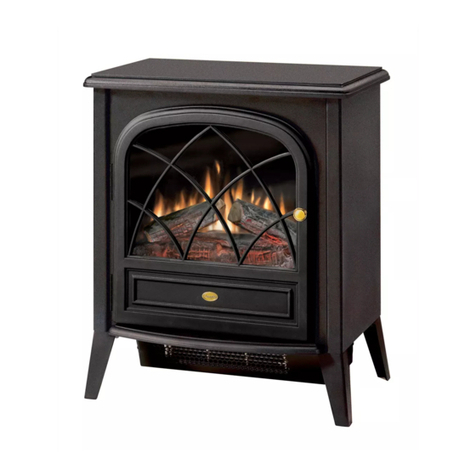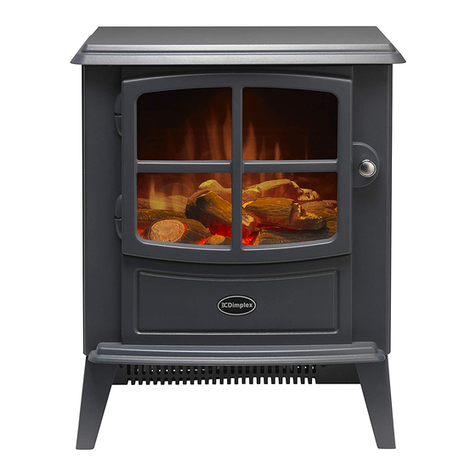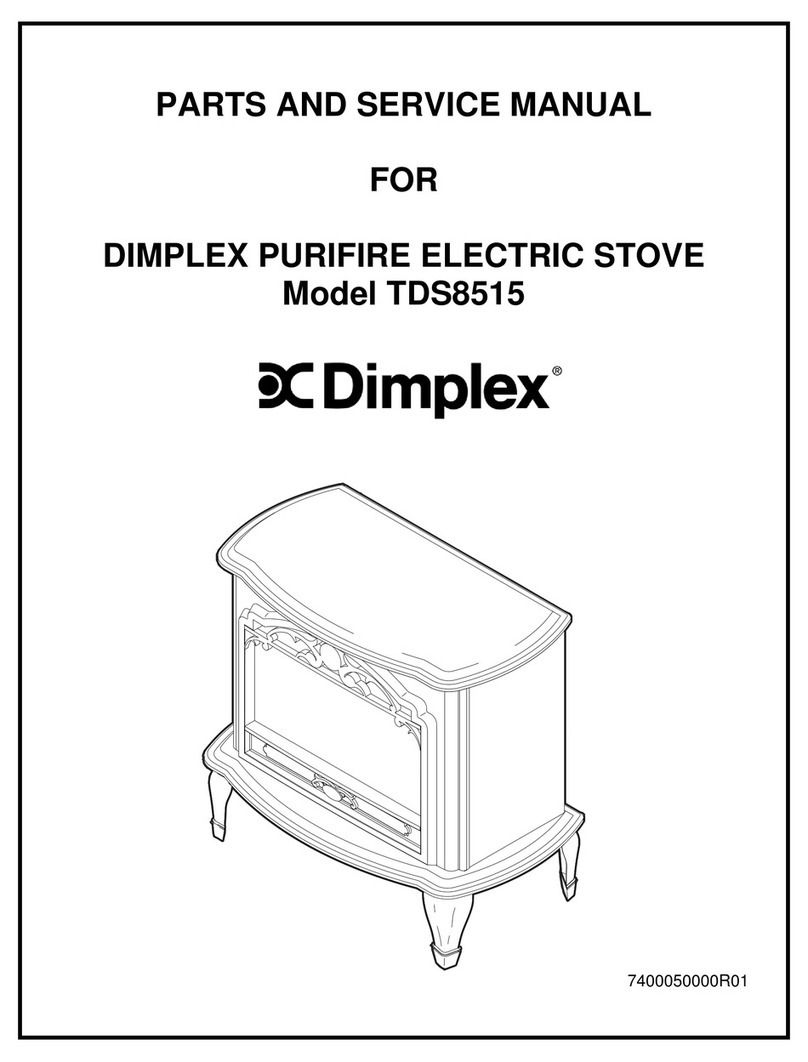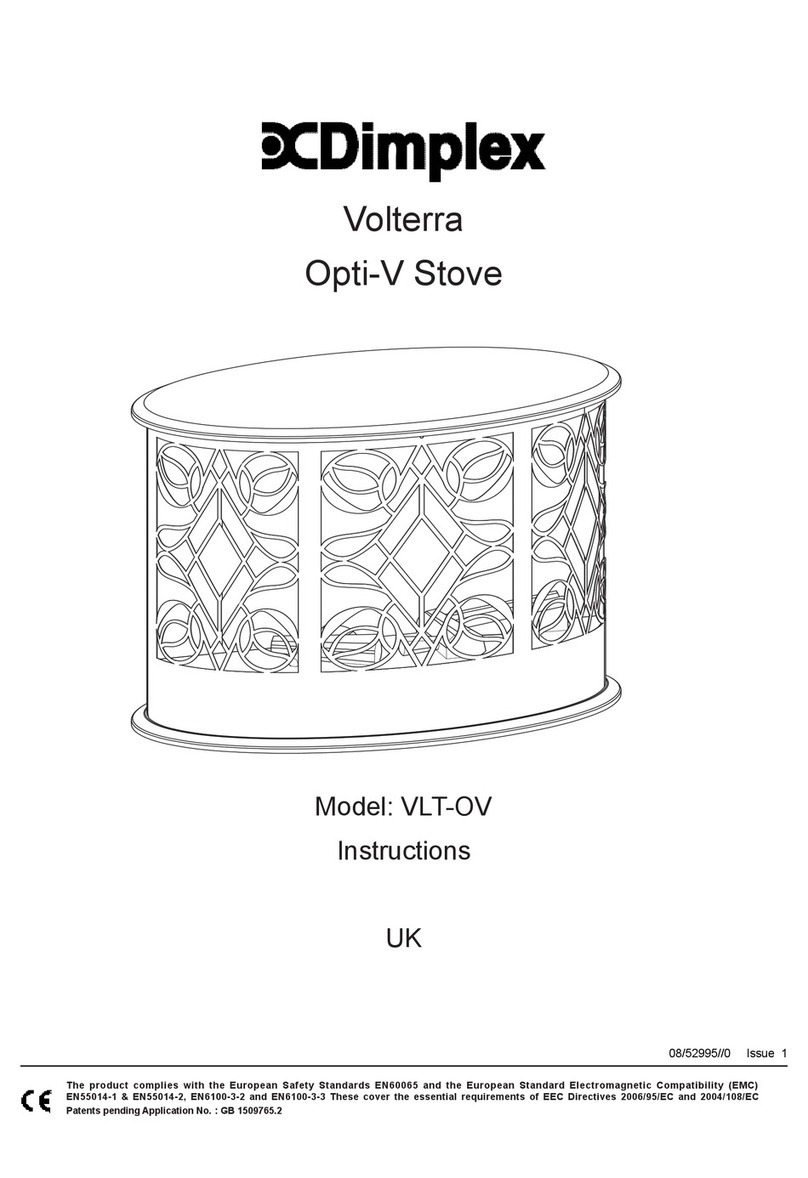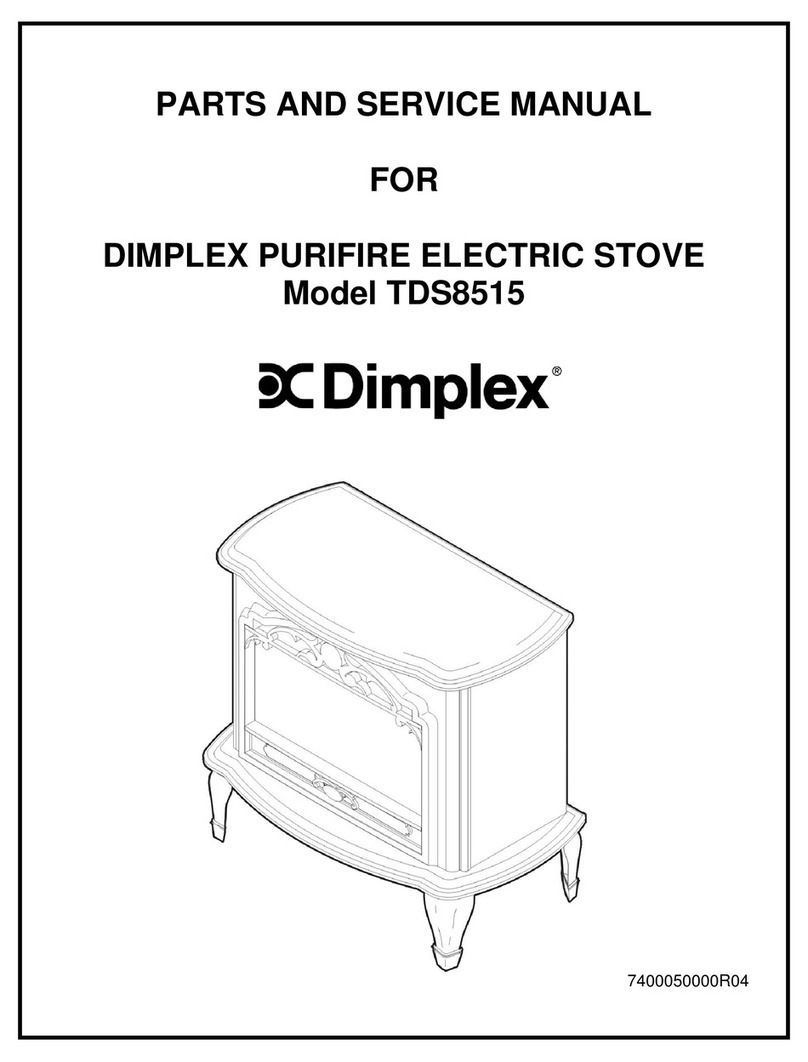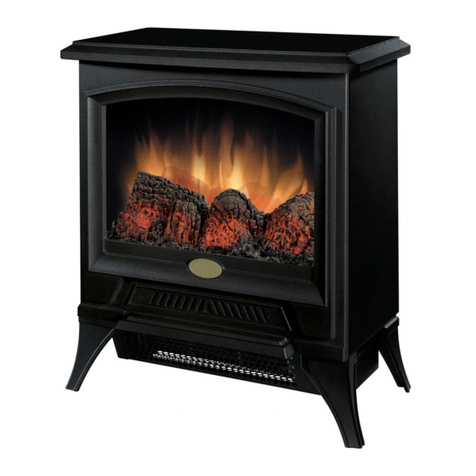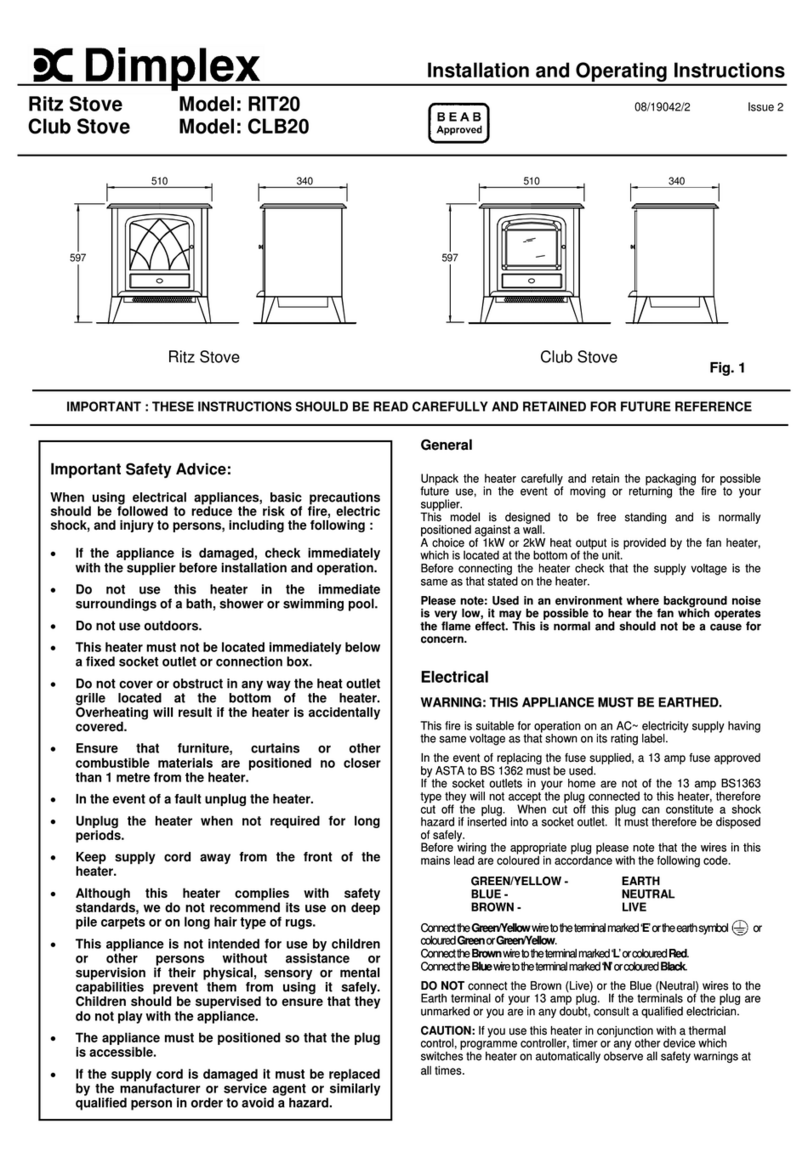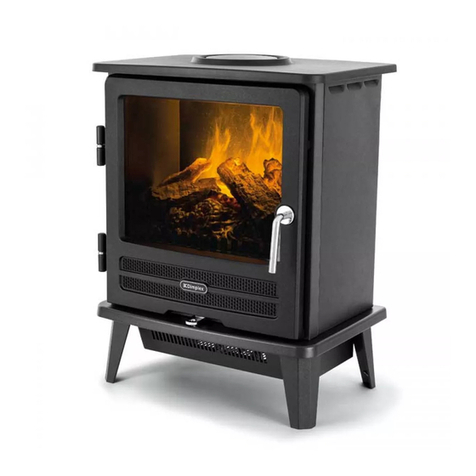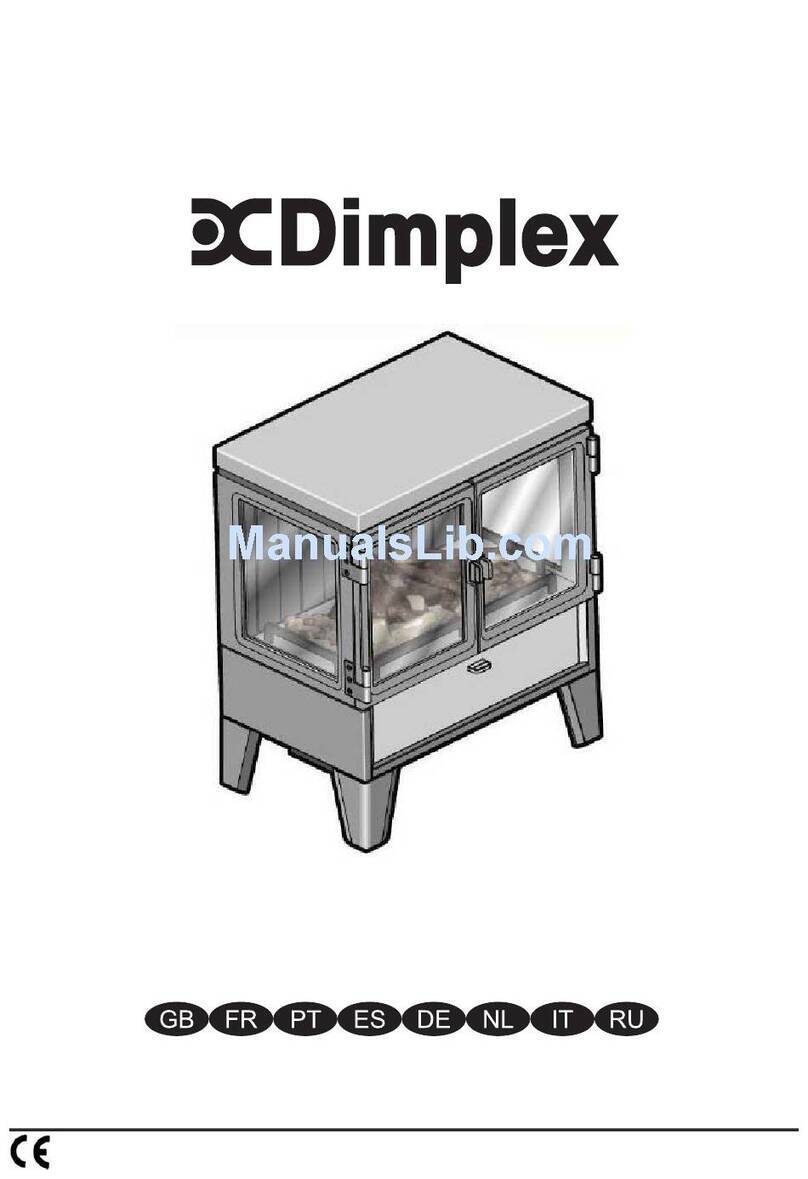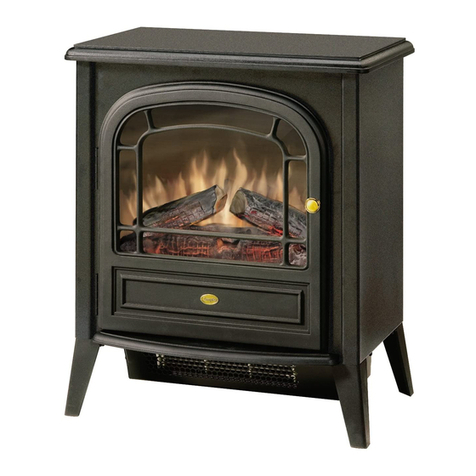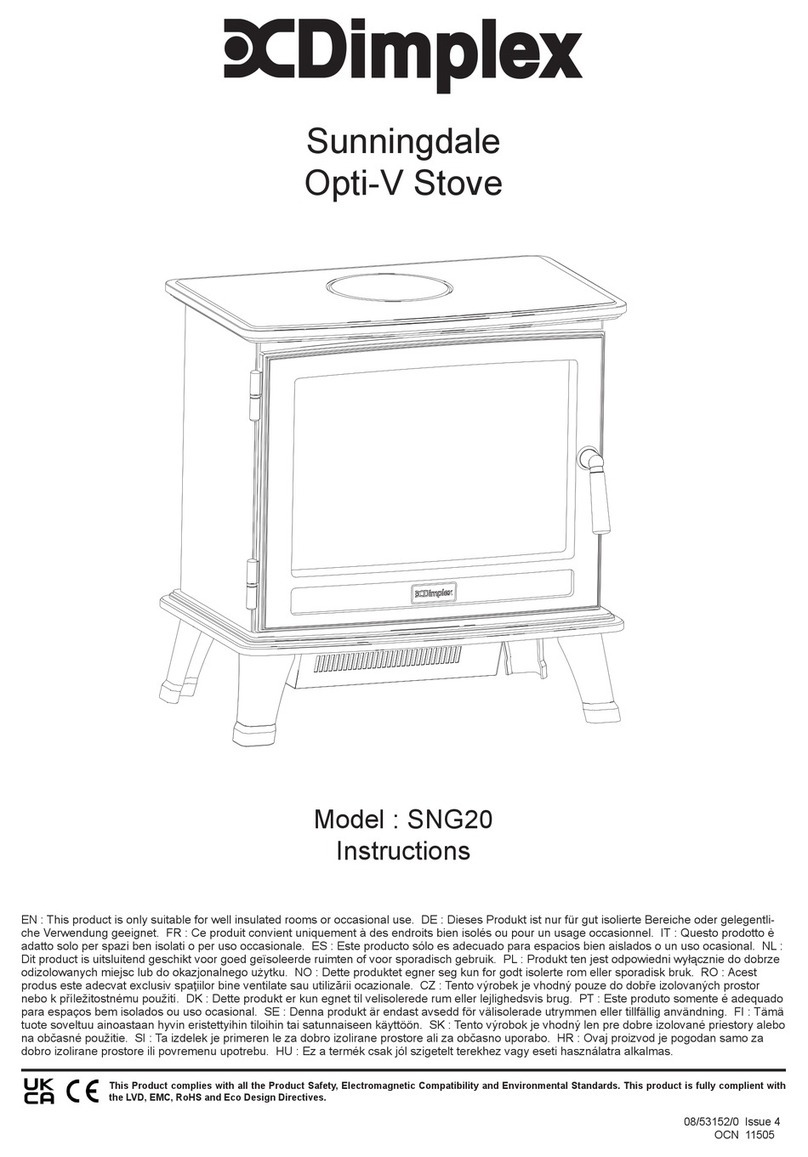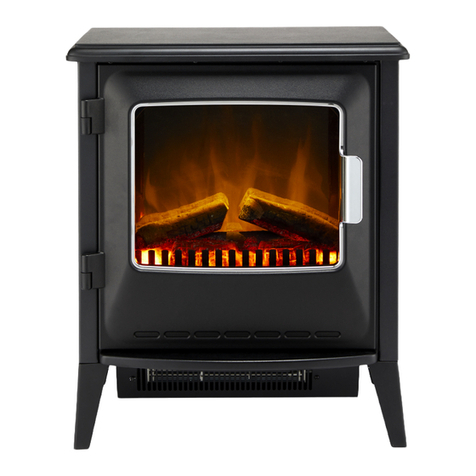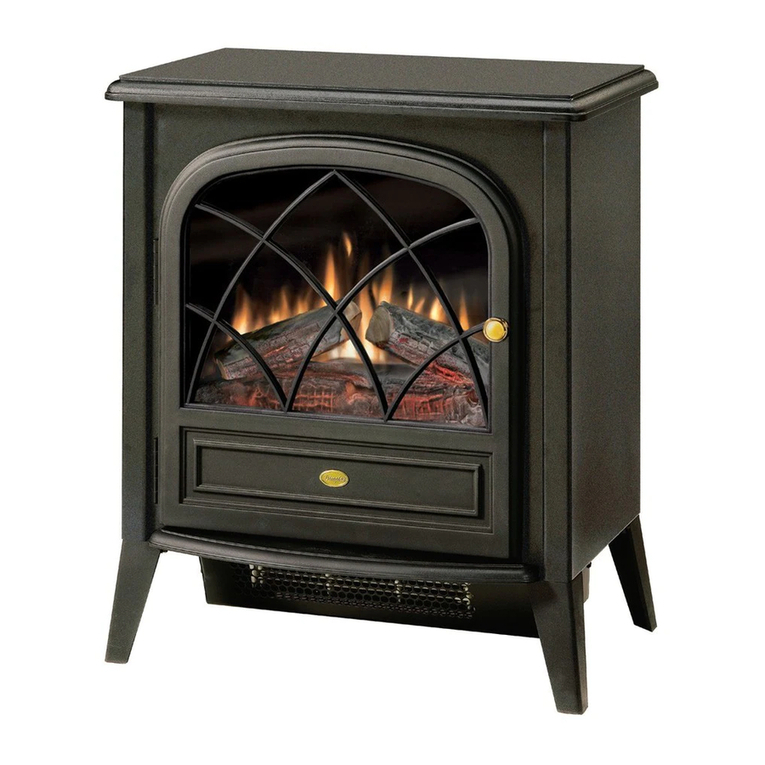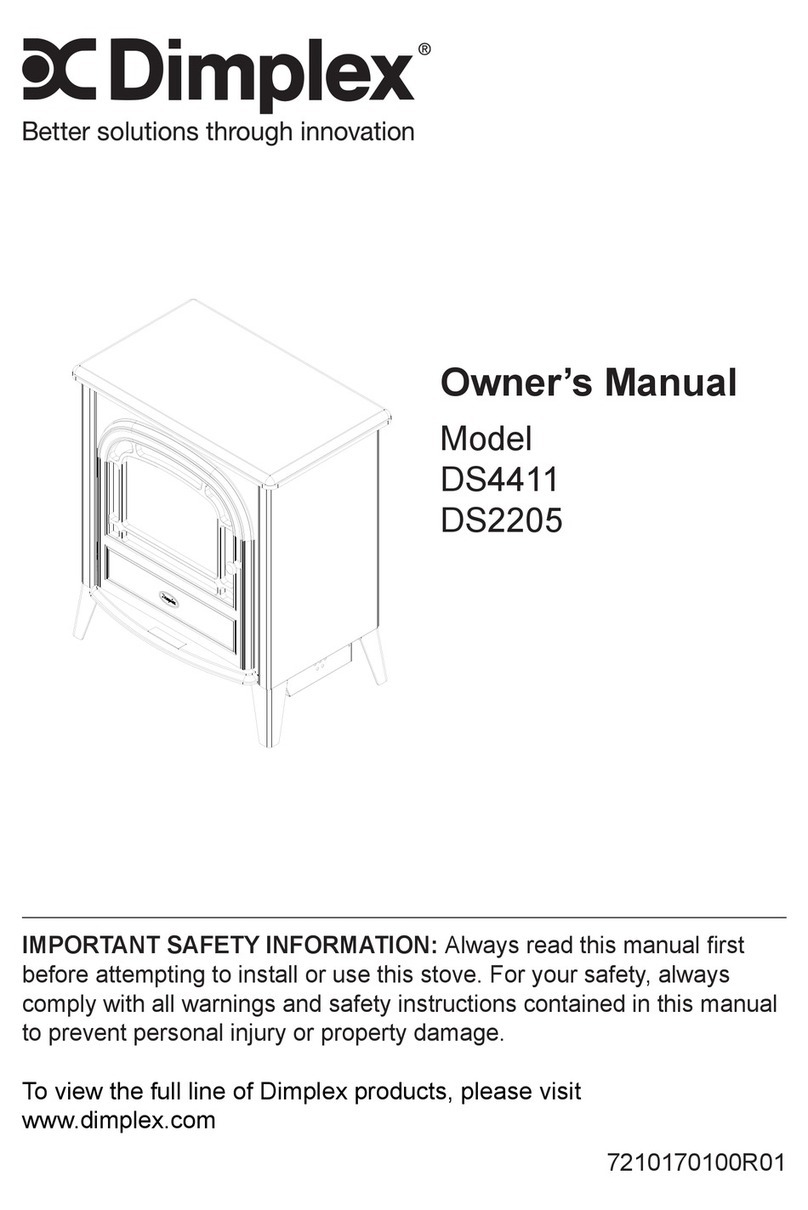is tted. If a ceiling fan is present it must be operated on max for
the duration of the test. If there are any extraction fans in adjacent
rooms these too must be operated on maximum setting during the
test with the interconnecting doors open. If any spillage occurs,
recheck the suitability of the ue system making sure there is
adequate air supply to the room (as per Building Regulations).
Light the appliance and slowly increase the temperature to medium
operating levels. The stove should not be run at full output for the
rst 3-4 burn cycles. Open the main re door when the appliance
reaches normal operating condition and carry out a spillage test
using a smoke match or pellet around the door opening. If any
spillage occurs, open all windows, allow the re to go out and
recheck the ue system and ventilation.
Operating Instructions
Please read fully these operating instructions and advise any other
users of the correct operating procedures for this stove.
Warning: The door and operating handles become hot when
the stove is in use. For your safety use the glove provided.
This stove will remain hot for a considerable time after the
re has extinguished. This stove should not be operated with
the door left open.
General
Unlike conventional stoves, this stove uses the down burn principle
where the ame path rises up to the bafe plate in the top of the
stove, circulates around the bafe mixing with secondary air from
the airwash above the door, then back down and out through the
re box outlet. The re box outlet is the narrow throat in the back
brick located at the bottom rear of the re box. Behind the back
brick is a combustion chamber that has its own (tertiary) air supply.
As smoke enters the combustion chamber it is injected with pre-
heated air which further increases the temperature as it burns
off smoke particles, creating cleaner emissions. The hot gasses
then circulate around the inner bafe and out the main ue outlet
entering into the connecting ue pipe.
Air Controls
Primary air is controlled via the sliding vent (A - Fig 9) in the bottom
of the door; this provides a conventional air draught to the bed of
the re. (+) indicates more air, (-) indicates less air, (+) and (-) are
marked on the primary air controls.
The secondary and tertiary air supplies create the clean burn
function; these air supplies are not adjustable. The primary air
supply controls the burn rate. There is a xed primary air bleed
on the door located above the primary air slide.
Initial Firing of Stove
We recommend that you have 3-4 small res before you operate
your stove to maximum heat output. This is to allow the paint to cure
and the castings to relax and consolidate location. We recommend
this ‘running in’ procedure after long idle periods to preserve the
life of the stove. During this you may notice an unpleasant smell.
It is not toxic but for your own sake we would suggest that during
this period you leave all doors and windows open.
Lighting the Stove
Place re lighters or paper and kindling on the grate. Light the
re at base leaving all air controls open. Allow the fuel to reach
a steady glow and build the re up gradually. Once you have a
good re established across the grate bed, further fuel can be
added as required.
UK
- 3 -
Running the Stove
When your fuel is well alight you can start to restrict the primary
air intake. Your stove is burning with maximum efciency when a
bright re is achieved using minimum air inlet. The stove is not
suitable for overnight burning.
Notes on Wood Burning
Wood burns best on a bed of ash and it is therefore only necessary
to remove surplus ash from the grate occasionally. Burn only
dry, well seasoned wood (< 20% moisture), which should have
been cut, split and stacked for 12 months with free air movement
around all sides of the stack to enable it to dry out. Burning wet or
unseasoned wood will create tar deposits in the stove and chimney
and will not produce a satisfactory heat output. When loading wood,
make sure that the end grain of the wood in the stove is pointing
away from the glass otherwise the moisture and gases coming
from the end grain of the wood will dirty the glass.
The maximum log length that should be used is 300mm (12”).
This stove is suitable for burning wood only. Do not use this stove
as an incinerator for household waste as fumes from plastic, etc
will cause pollution to the atmosphere and will cause damage to
the stove.
Petroleum coke fuels, household waste or liquid fuels must
not be burned in this appliance.
Shutting Down
To shut down the stove, close the primary air controls and then
the secondary air controls by moving both sliders to the left. If the
controls are left in this position the re will be starved of air and
will go out. To revive the re open the primary air controls rst,
then the secondary air.
De-Ashing
To de-ash the grate draw the grate rod (C - Fig 9) forwards and
backwards with a slow positive action repeatedly (Fig 8) so the
ash falls though to the ashpan. Use the poker tool to remove any
ash build up under the rebrick at the rear of the grate as this is
where the main ue exit is located.
The ash pan should be emptied each time after operating the stove
so not to let build up of ash occur. Where possible, it is best to
wait until the stove and ash has cooled before removing the ash
pan. To remove, open the stove door by lifting the handle upward
(B - Fig 9) then using the riddle handle lift the ash pan out of the
re (Fig 10). For efcient burning of your appliance, make sure
the grate is clear of burnt debris; e.g. nails, etc.
Shut down Periods
If shutting down the stove for long periods (e.g. for summer months)
make sure that all ash is removed from the stove and that the
chimney ue ways and bafe plate are brushed clean. When the
stove is cold a vacuum cleaner may be used to remove any residual
ash or soot. Close the door and leave all air inlets open fully. This
action will ensure air circulation through the appliance and will help
to avoid corrosion and condensation within the appliance during
this shut down period.
Safety Notes for Your Guidance
FIRES CAN BE DANGEROUS.
Always use a re guard in the presence of children, the elderly
or the inrm. Inform all persons the dangers of high temperatures
during operation of the appliance including the stove pipe.
Use operating tools provided.

